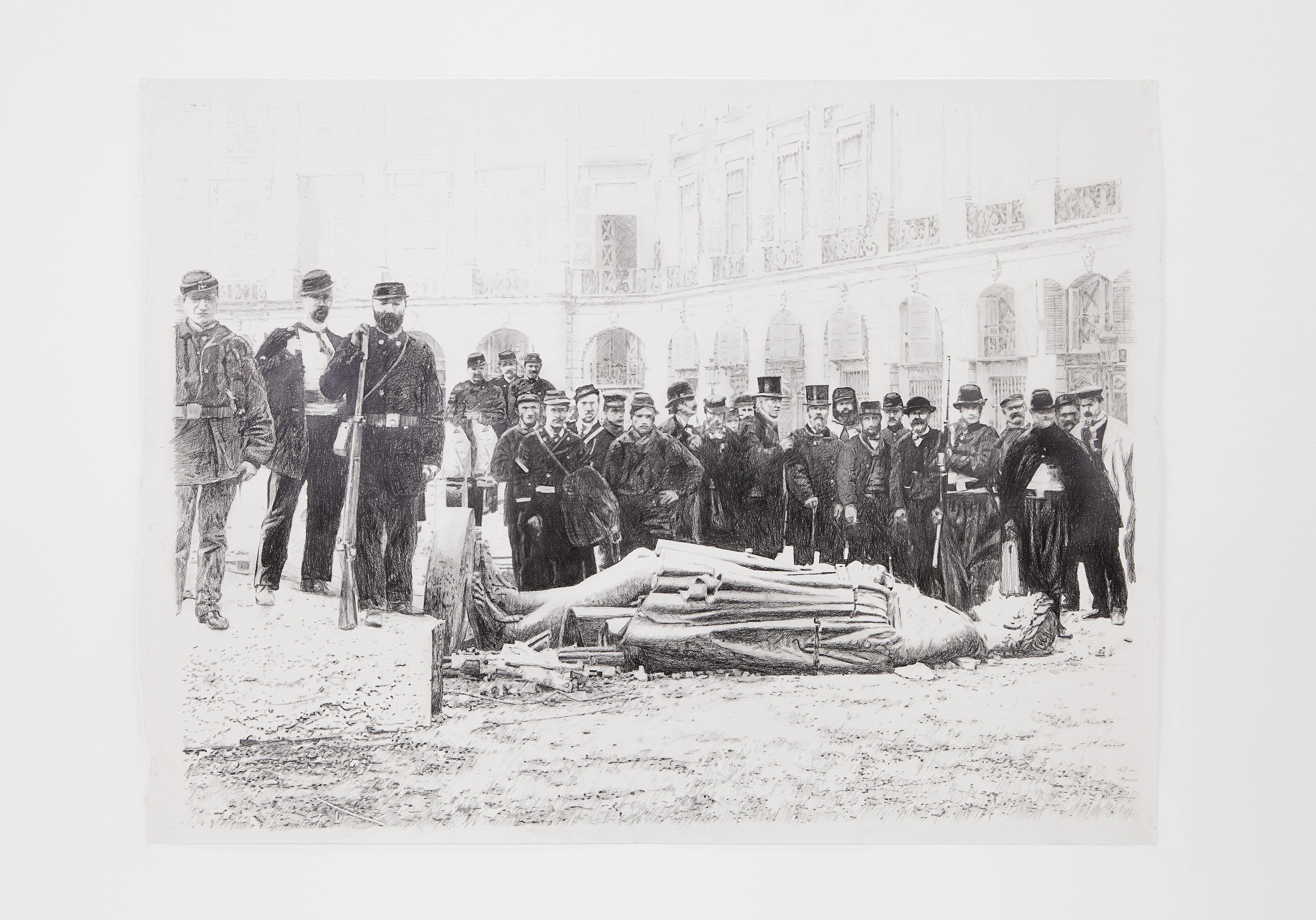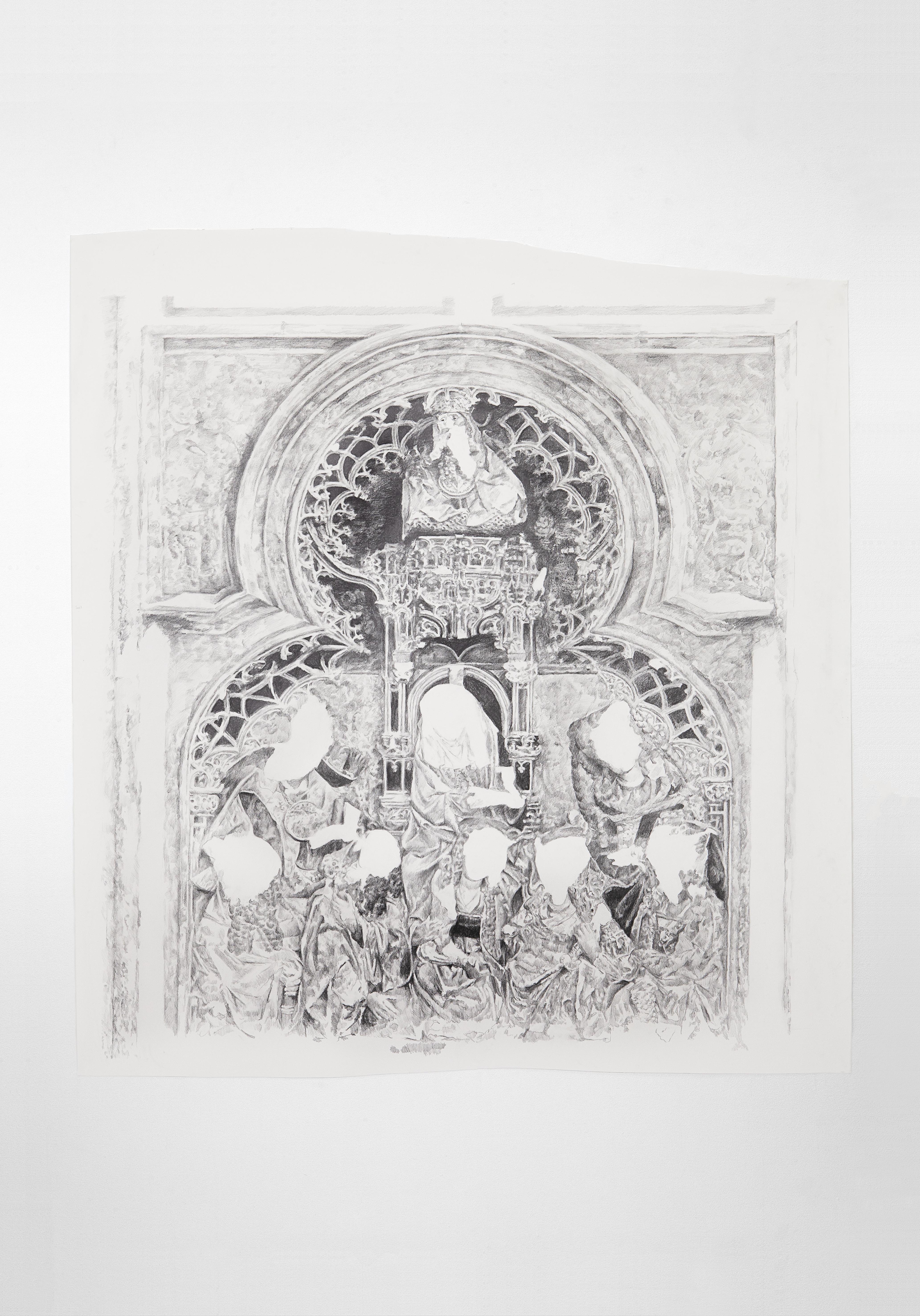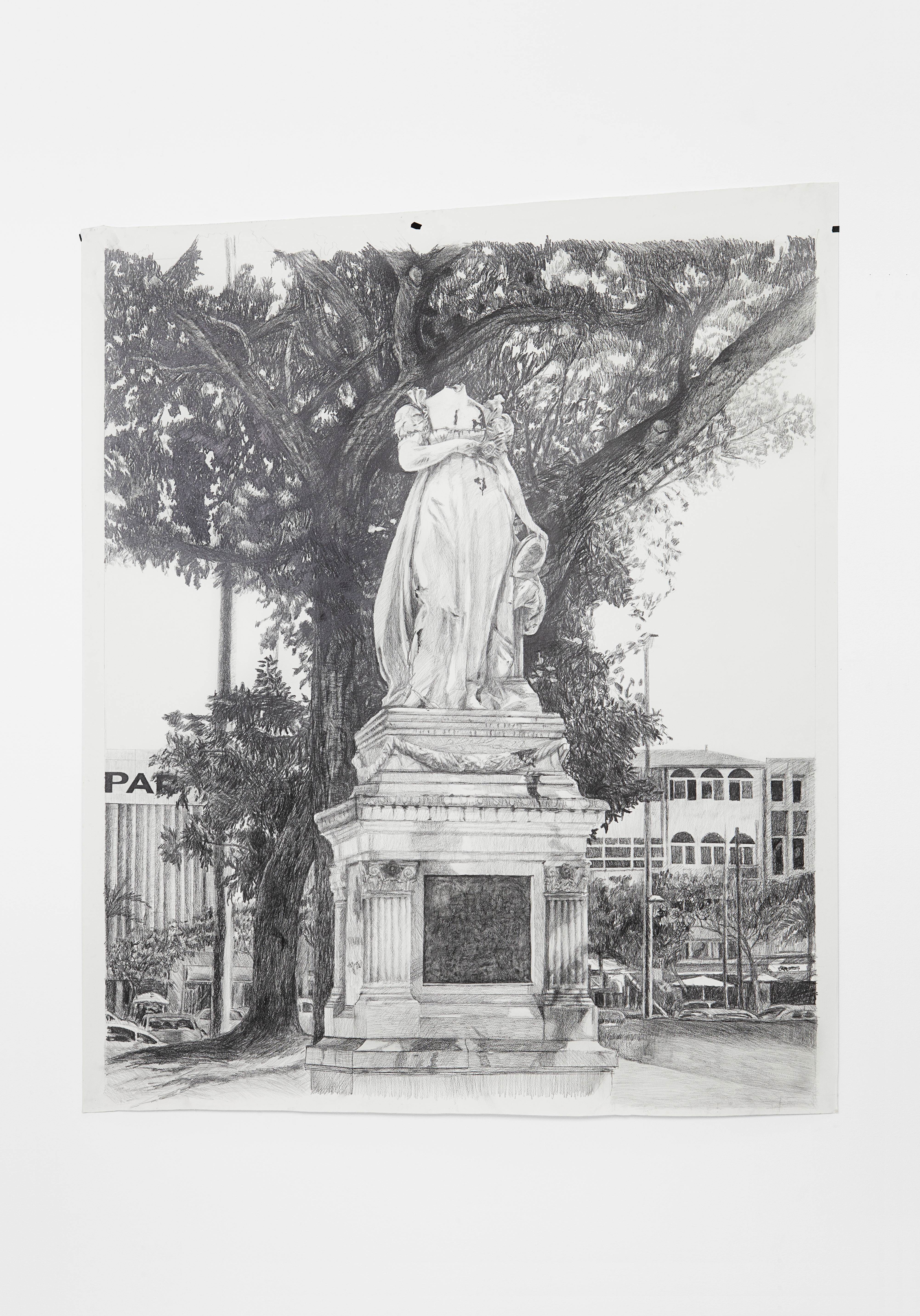It’s 16 May 1871, during the heady days of the Paris Commune. In front of a monument brought down, a motley of men – members of the commune – proudly stand as a group portrait memoralising their historic action that resulted in that monument’s toppling. What has been grounded is the statue of Napoleon Bonaparte, wearing classical dress and a laurel crown, that stood upon the tall Vendôme Column that celebrated France’s victory at Austerlitz. This group portrait is a document capturing a moment of great significance, to be sure, but it’s more fundamentally a letter to future addressees. And it attains that possibility because the communards have self-consciously usurped the past in their own present for the express purpose of creating a future, a new society, that won’t be caged in the repetition structure of tradition.

For those interested in art history, the man standing ninth from the right is the painter Gustave Courbet, bushy bearded and staring at the camera. He was the architect, or de-architect perhaps, of the scheme to bring Napoleon hurtling down to earth. Courbet had witnessed the 1848 revolution descending from radical possibility to the emergence of a new monarchy led by Napoleon III and the formation of the Second Empire. Karl Marx famously remarked, in response to those very events, that everything happens in history twice: first as tragedy and secondly as farce. Courbet in 1871 must have viewed bringing down the statue of Napoleon I as a blow against Napoleon III who died the year before. Perhaps he wanted to ensure that Marx was correct and that there would not be a third time. After the Paris Commune was quashed by the authorities, Courbet was briefly imprisoned for his role in toppling Napoleon’s statue. In May 1877, Courbet was ordered to pay a fine of 10,000 francs per annum for 33 years to finance the erection of a new Vendôme Column. Courbet died on New Year’s Eve 1877 from liver disease, one day before he was due to pay his first instalment.
But we’re not looking at a photograph, of course, since we are, instead, looking at a drawing closely modelled on the photograph. And we might be looking at that drawing photographically reproduced either on this website or, preferably, in square 4 at the University of Essex. The drawing was made by the artist Sam Durant and is part of his Iconoclasm series in which monuments that have been destroyed or visibly in the process of being destroyed are depicted. Most of the drawings are rooted in twentieth century events, but Paris 1871 is one of two exceptions that point to a wider purview. The other exception is Utrecht 1572, which differs considerably from the others in the series by dint of the fact that it presents a religious painting – rather than a monument – that has been partly defaced and also because there is a considerable gap between the iconoclastic act itself and the photographic documentation of that gap.

One might speculate that Utrecht 1572 is included in the series as a historical prelude to all the other drawings. In his magisterial and endlessly fascinating book The Reformation of the Image, Joseph Leo Koerner points out that the Lutheran reformers’ argument that images are merely images, material representations utterly different from the things and ideas they represent, and therefore are simultaneously misleading and insignificant, had a paradoxical outcome: denying the image’s value and efficacy as justification for its eradication, iconoclasm conferred upon the image – or confirmed – its value and efficacy. Nobody believes in the power of images in quite a way than those committed to their destruction does. The iconoclastic fury unleashed by the Reformation was crucial for art’s subsequent accrual of cultural status.
It's that recognition of art’s power that subtends many of the debates around monuments and their toppling. Part of that power stems from the way artworks are taken as capable of representing a given community or public sphere. Art, however, frequently outlives any given public, consequently becoming off-kilter from the various norms that defines that public and its lived experience. This issue becomes knottier when it’s a matter of monuments rather than art per se. Monuments engender a particular claim to publicness. In a sense, monuments are imagined as arbiters of what a public is or should be; the public, perhaps, is meant to be constituted as a monument’s mirror image. But monuments obviously don’t spring from the ground; they are erected by certain social groups and, as such, impose those groups’ values. The hope in destroying the monument is not that we are liberated from the past but that we are also conceive forms of representation embodying a better tomorrow and better able to represent the public.
That’s why the various destructions reproduced by Durant are iconoclastic gestures rather than wanton vandalism. In several of the drawings, iconoclasm is key to decolonisation, as we observe in Fort-de-France 1991. Attacking the monument freighted upon the people symbolizes a desire for autonomy. It’s also why these drawings find their true home in the public spaces around the University of Essex campus rather than in its gallery. They call upon students, staff, and visitors to consider their own relationship to public space; how that space does or does not represent them. After all, we are the public and we have a claim upon that space and the way it represents us.

---
The Iconoclasm exhibition at the University of Essex Colchester campus has now been extended to 7 May 2023. You can learn more about the exhibition of Sam Durant’s Iconoclasm via Art Exchange’s website.
Join Curator Jess Twyman for a walking tour of Sam Durant's Iconoclasm on Wednesday 8 March at 2pm, starting from the Art Exchange.
Sam Durant and local writer and curator, Jes Furnie will participate in an Artist's Talk: an Archive of Destruction on Wednesday 26 April, 6pm to 7.15pm in the Ivor Crewe Seminar Room. Jes Furnie curates the Archive of Destruction.






